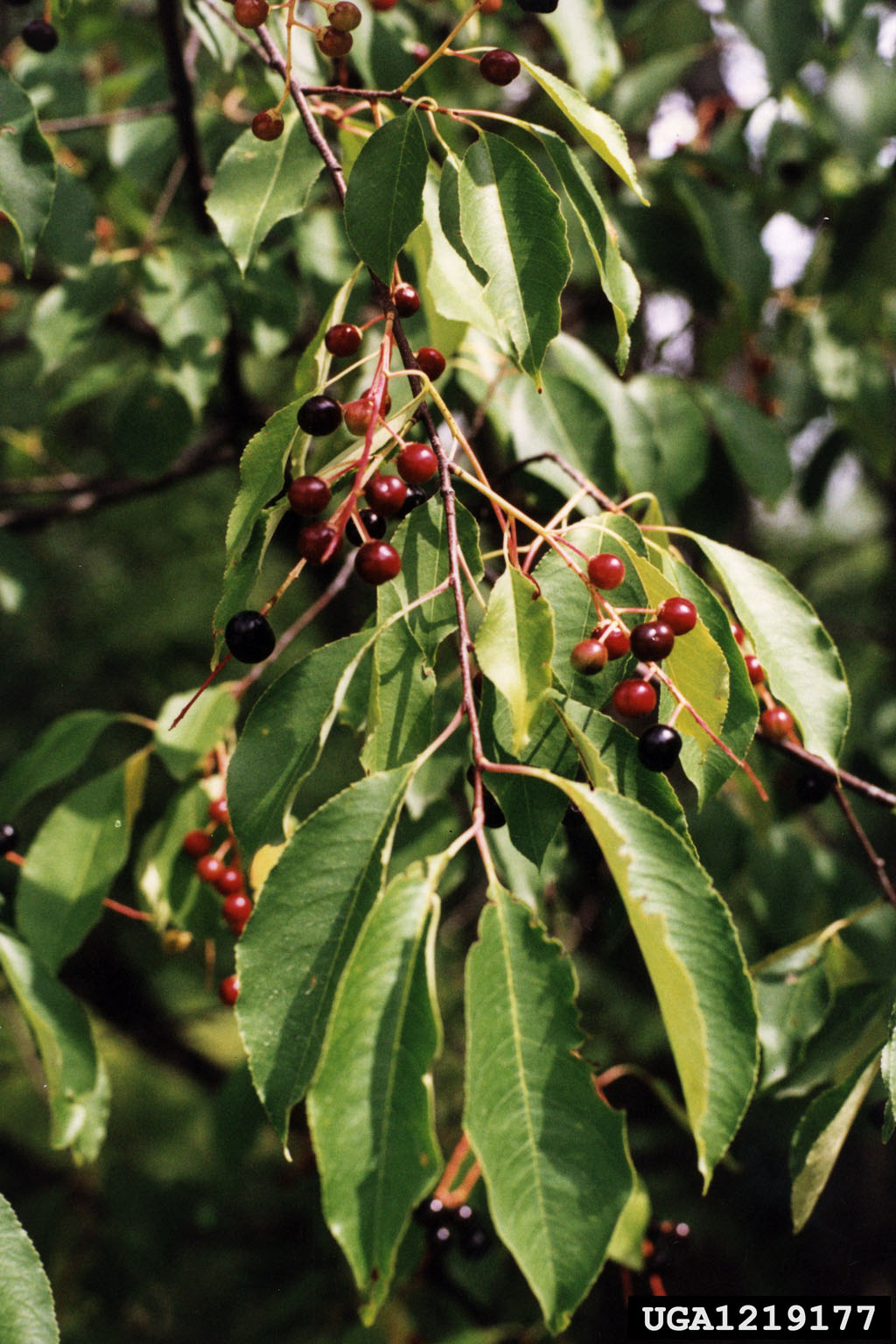Bareroot Plant Material
Black Cherry
Black Cherry
Couldn't load pickup availability
25 plants per unit
Prunus serotina is native to the eastern third of Kansas. Height can reach 50 to 80 feet, with 30-50 feet crown spread. Growth rate is fast, 2-4 feet per year.
Leaves, Stems, Fruit
Narrow glossy green leaves grow up to 5 inches long and turn yellow or rose colored in the fall. Clusters of fragrant white flowers appear in the spring (April-May). Dark purple/black cherries ripen in the late summer and are often used for jams, jellies or flavoring of liquors. The outer bark is a dark gray brown and appears shaggy. The inner bark is a reddish-brown and is often used for furniture. Due to its toxic cyanogenic compounds, the inner bark gives off a bitter almond aroma.
Use
Wildlife - White flowers in April/ May yield to small cherries that ripen in late summer. Attractive to pollinators, birds and wildlife; suitable for human use in jams.
Fuelwood - Multi-stemmed habit and fast growth rate combined with high fuel value make this a desirable species for inclusion in a woodlot.
Timber - This is the kind of tree that cherry furniture is made from. Hard, reddish wood is a valued wood product for making furniture, instruments, etc.
Adaptation and Soil
Black cherry grows most commonly near lowlands, and thrives in somewhat moist, but well-drained soils. Tolerant of coarser soils, but not of especially mucky clay. Will tolerate some drought once established.
Spacing
Space the trees 15 to 20 feet apart for timber production. Periodic thinning assists in high quality wood production.
Culture
One to two-year old, bare-root seedlings produced from stratified seed are used in plantings. Seedlings are 12-24 inches tall. Successful plantings require that a proper site is selected, the soil is thoroughly prepared and good weed and grass control is practiced.
Pests
No serious insect or disease problems. Miscellaneous fungal diseases can occur on leaves, and aphids, scale, and Japanese beetles will eat leaves. These usually do not seriously affect the health of the tree.









